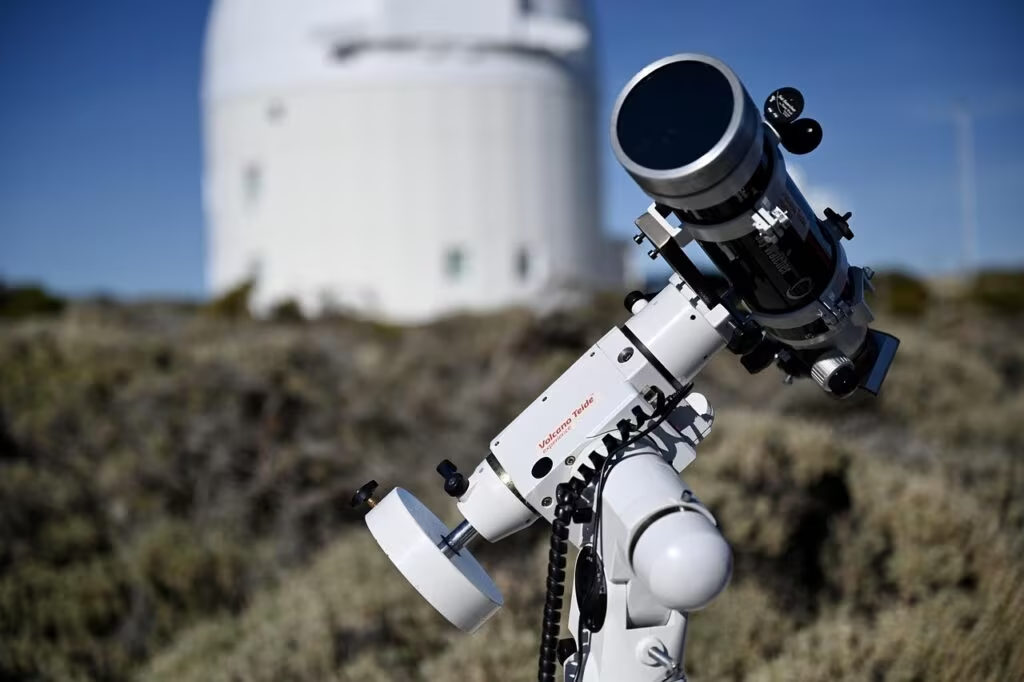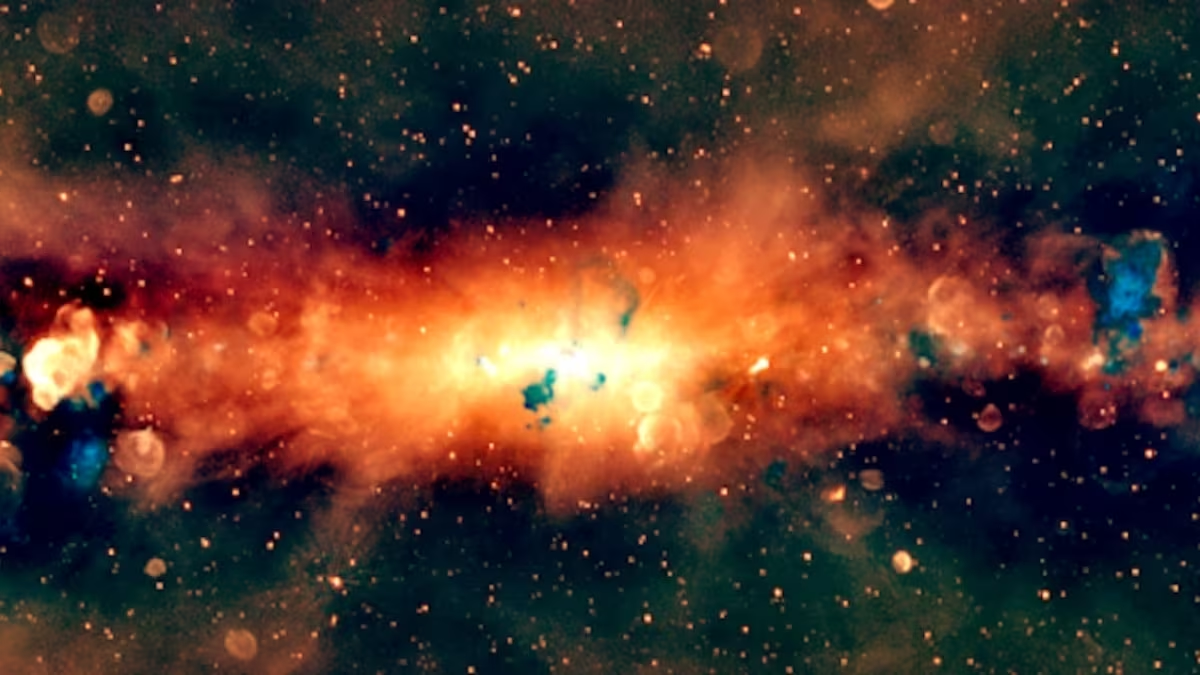Mapping the Invisible: How Radio Astronomy Reshapes Our View of the Milky Way
For centuries, humanity has gazed upon the Milky Way, seeing a luminous river of stars stretching across the night sky. Yet, this visible light only captures a fraction of our galaxy’s complexity. A groundbreaking new project has culminated in the release of a giant radio map of the Milky Way, offering an unprecedented, high-resolution view of phenomena previously obscured by dust and gas.
This monumental achievement, derived from extensive observations using powerful radio telescope arrays, fundamentally changes our understanding of the dynamic processes—from star formation to magnetic field interactions—that govern our galactic home. The map is not merely a picture; it is a comprehensive dataset that acts as a roadmap for future astronomical research, prioritizing the study of high-energy physics and gas dynamics over stellar populations.
MeerKAT’s Unprecedented Sensitivity and Scale
The new map is the result of a massive undertaking, often associated with the MeerKAT radio telescope array located in the Karoo desert of South Africa. MeerKAT, a precursor to the Square Kilometre Array (SKA), boasts exceptional sensitivity and wide-field imaging capabilities, making it ideal for surveying the vast, faint radio emissions originating from the galactic plane.
Unlike optical telescopes, which are blocked by dense interstellar dust, radio telescopes pierce through these obscuring layers, allowing scientists to observe the Milky Way’s core and distant spiral arms with clarity. The resulting composite image covers an immense area of the sky, capturing details down to the arcsecond level—a resolution previously unattainable across such a large field of view.

Decoding the Radio Sky: What We Are Seeing
When we look at the Milky Way in visible light, we see stars, nebulae, and dust clouds. When we look in radio wavelengths, we see something entirely different: high-energy physics in action. The radio map primarily captures synchrotron emission, which is generated when highly energetic electrons spiral around magnetic field lines at speeds close to that of light. This emission highlights three critical components of the galaxy:
- Supernova Remnants (SNRs): The expanding shells of gas and plasma left behind after massive stars explode. These remnants are powerful particle accelerators and appear as bright, complex structures in the radio spectrum.
- Star-Forming Regions: Areas where dense molecular clouds are collapsing to form new stars. The intense radiation from young, hot stars ionizes the surrounding gas, which then emits radio waves.
- Galactic Magnetic Fields: The large-scale structure of the galaxy’s magnetic field, which is traced by the orientation and intensity of the synchrotron emission. Understanding these fields is vital for comprehending cosmic ray propagation and galaxy evolution.
Key Discoveries and Previously Hidden Structures
The sheer depth and clarity of the new radio map have led to the identification of hundreds of new features, many of which were previously unknown or only vaguely hinted at in older, lower-resolution surveys. Among the most significant findings are:
1. New Magnetic Filaments
One of the most striking features of the Galactic Center region is the presence of long, thin, magnetized filaments. While some of these were known, the new map reveals hundreds more, often organized in complex, parallel bundles. These filaments, which can stretch for dozens of light-years, are thought to be related to the intense magnetic fields near the supermassive black hole, **Sagittarius A***.
“The detail we are seeing in these magnetic structures is unprecedented. It suggests that the magnetic dynamics of the inner galaxy are far more complex and energetic than our previous models predicted,” stated one of the lead researchers involved in the data processing.
2. Giant Radio Bubbles and Outflows
The map provides clearer evidence and structure for massive, symmetrical radio bubbles extending above and below the galactic plane. These structures, which span thousands of light-years, are likely the result of past energetic outbursts from the Galactic Center—possibly driven by a period of intense star formation or activity from Sagittarius A*.
3. Detailed Supernova Remnants
By resolving the fine structure of known and newly discovered supernova remnants, astronomers can now better calculate the energy released during these explosions and study how the shockwaves interact with the surrounding interstellar medium. This is critical for understanding how heavy elements are distributed throughout the galaxy.

Implications for Future Galactic Research
This comprehensive radio map serves as a foundational dataset for galactic astronomy in the 2020s and beyond. Its utility spans multiple scientific disciplines:
Understanding Star Formation
By precisely mapping the distribution of cold and warm gas—the raw material for new stars—the map helps astronomers refine models of star formation efficiency. The interaction between high-energy cosmic rays (seen in radio) and dense molecular clouds (seen in millimeter waves) is a key factor in triggering or suppressing star birth.
Refining Magnetic Field Models
Perhaps the most profound impact is on the study of galactic magnetism. Magnetic fields play a crucial, yet poorly understood, role in regulating gas flow, cosmic ray transport, and the overall structure of spiral galaxies. The high-resolution data allows researchers to perform polarimetry—measuring the orientation of the radio waves—to map the three-dimensional structure of the magnetic field with unprecedented accuracy.
Preparing for the SKA
As a pathfinder instrument, MeerKAT’s success with this map provides invaluable technical and scientific experience for the upcoming Square Kilometre Array (SKA) project. The techniques developed to process and analyze this massive dataset will be directly applied to the even larger volumes of data expected from the SKA, ensuring that future radio astronomy endeavors are built on a solid foundation of expertise.
Key Takeaways: The New Radio View
This giant radio map represents a significant leap forward in galactic astronomy, offering a perspective on the Milky Way that is fundamentally different from the one we see with our eyes. The essential points for readers to understand are:
- The Instrument: The map was primarily generated using the highly sensitive MeerKAT radio telescope array in South Africa.
- The Target: It focuses on the galactic plane, particularly the complex and dynamic Galactic Center, which is usually obscured by dust in visible light.
- The Physics: Radio waves primarily reveal synchrotron emission, which traces high-energy electrons interacting with magnetic fields.
- The Discoveries: The map has revealed hundreds of new, highly organized magnetic filaments and provided detailed structures of massive radio bubbles and supernova remnants.
- The Impact: This dataset is crucial for refining models of galactic magnetic fields, cosmic ray transport, and the mechanisms that drive star formation across the galaxy.
Conclusion: A New Era of Galactic Exploration
The release of this comprehensive radio map marks a new era in the exploration of our own galaxy. It transforms the Milky Way from a familiar, star-filled band into a vibrant, high-energy laboratory where magnetic forces dictate structure and dynamics. By providing a clear view of the processes hidden beneath the veil of interstellar dust, this map ensures that the next generation of astronomers has the tools necessary to unlock the deepest secrets of galactic evolution and the role of magnetic fields in the cosmos. The data is now available to the global scientific community, promising years of intensive analysis and potentially revolutionary discoveries.
What’s Next
Researchers are now focusing on integrating this radio data with observations from other wavelengths—including infrared, X-ray, and gamma-ray—to create a truly multi-wavelength model of the Milky Way. This holistic approach will allow for a complete picture of the energy budget and physical conditions within the galaxy, pushing the boundaries of astrophysics well into the late 2020s.
Original author: The Conversation
Originally published: October 30, 2025
Editorial note: Our team reviewed and enhanced this coverage with AI-assisted tools and human editing to add helpful context while preserving verified facts and quotations from the original source.
We encourage you to consult the publisher above for the complete report and to reach out if you spot inaccuracies or compliance concerns.

